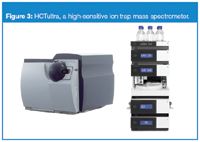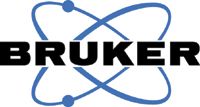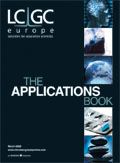Melamine and Cyanuric Acid Detection in 5 Minutes using LC–MS
Since September 2008, 294 000 infants and young children suffered urinary problems as a result of the contamination of melamine in infant milk powder and were hospitalized. This hospitalization was required to treat the symptoms caused by the ingestion of melamine contaminated infant formula and related dairy products. Previously in 2007, pet food, animal feed wheat gluten and other protein-based foods were found to contain residues of melamine and its degradation product cyanuric acid.
Leith J. Fremlin and Matthias Pelzing, Bruker Daltonik GmbH, Bremen, Germany.
Introduction
There is a requirement for a fast and accurate LC–MS–MS method capable of detecting melamine in various matrices at concentrations determined by food authorities. For example, the Food and Drug Administration (FDA) has set a limit of 1 ppm for melamine in infant formula and 2.5 ppm for other foods. LC–MS–MS methods gain leverage in that they have an easy sample preparation and do not require sample derivatization. The high-capacity ion-trap mass spectrometer (HCTultra) is a highly robust system capable of operating in full scan, MSn and MRM modes. The option to use the full scan mode aids in the identification of unknown compounds with sensitivity superior compared with triple-quadrupole mass spectrometer technology. Here we report a recently developed method for the extraction, detection and quantification of melamine and cyanuric acid residues using HCTultra mass spectrometry in association with the Acclaim Mixed-Mode WAX-1 column from Dionex.
Experimental Conditions and Settings
All organic solvents were HPLC grade purchased from Honeywell Burdick and Jackson (Morristown, New Jersey, USA). Melamine and cyanuric acid standards were purchased from Sigma Aldrich (St. Louis, Missouri, USA). 18 MΩ water was obtained from a Milli-Q (Millipore corporation, Billerica, Massachusetts, USA) purification system.
Instruments employed
HCTultra, Bruker Daltonics
UltiMate 3000, Dionex
Calibration standards
Standards were prepared from a stock solution of melamine (1 mg/mL) and cyanuric acid (1 mg/mL) with serial dilutions performed to prepare standards from 0.1 to 1000 ng/mL. Stock solutions were made in methanol:water (1:1), while serial dilutions were made in acetonitrile:water (1:4).
Sample preparation
Infant milk power was extracted in water:acetonitrile (1:4) by sonication (30 min). The resulting extract was centrifuged at 10000 rpm for 10 minutes, followed by the supernatant being removed and recentrifuged at 12000 rpm for 15 minutes. The resulting extract was diluted as required for HPLC analysis. Spiked samples were prepared in the same manner with melamine and cyanuric acid added prior to extraction at the required concentration.
Chromatographic conditions
Chromatographic separations were performed using a Dionex UltiMate 3000 using an Acclaim Mixed-Mode WAX-1 (Dionex, Sunnyvale, California, USA) column (2.1 × 150 mm, 5 μm) maintained at 30 °C. For details please refer to reference 1.
Full scan mass spectrometer parameters
A high-capacity ion trap LC–MSn system (HCTultra) from Bruker Daltonik GmbH (Bremen, Germany) was equipped with the standard ESI ion source. Full scan data was acquired in UltraScan mode between m/z 50–200, in positive mode for melamine and negative mode for cyanuric acid, and with a fixed accumulation time of 20 ms. The use of run-time segments facilitated the polarity swapping.
Experimental results
It is possible to detect both melamine and cyanuric acid in full scan mode in under 5 minutes (Figure 1).

Figure 1
MRM results (standards)
The limit of detection was found to be 0.05 ppb, which resulted in a signal-to-noise of 50:1. A calibration curve ranging from 1 to 1000 ppb is shown in Figure 2. Melamine was spiked into infant milk formula (1 ppm and 2.5 ppm) and extracted as per the conditions above. Despite the low detection limits, these concentrations were chosen on the basis of infant milk contamination recommendations.

Figure 2
MRM results (contaminated infant milk powder)
Two contaminated infant milk powders from China were analysed by the method described. One sample was found to contain 17 ppm melamine, while the second sample contained 9 ppm melamine, both well over the recommended concentration for infant milk formula.
MRM mass spectrometer parameters
MRM data for melamine was acquired using the UltraScan mode with monoisotopic isolation to achieve high selectivity.
Conclusions
It is demonstrated that melamine is conveniently detected at very low concentrations (0.05 ppb). Using the high capacity ion trap mass spectrometer HCTultra (Figure 3), it is possible to detect and quantify melamine at concentrations relevant to food authorities in less than 5 minutes.

Figure 3
For research use only. Not for use in diagnostic procedures.
Reference
1. Bruker Daltonics Application Note LCMS-49. Melamine and Cyanuric Acid Detection in 5 Minutes using LCMS

Bruker Daltonik GmbH
Fahrenheitstr. 4, 28359 Bremen, Germany
tel. +49 421 2205 0 fax +49 421 2205 104
E-mail: sales@bdal.de
Website: www.bdal.com

Study Explores Thin-Film Extraction of Biogenic Amines via HPLC-MS/MS
March 27th 2025Scientists from Tabriz University and the University of Tabriz explored cellulose acetate-UiO-66-COOH as an affordable coating sorbent for thin film extraction of biogenic amines from cheese and alcohol-free beverages using HPLC-MS/MS.
Multi-Step Preparative LC–MS Workflow for Peptide Purification
March 21st 2025This article introduces a multi-step preparative purification workflow for synthetic peptides using liquid chromatography–mass spectrometry (LC–MS). The process involves optimizing separation conditions, scaling-up, fractionating, and confirming purity and recovery, using a single LC–MS system. High purity and recovery rates for synthetic peptides such as parathormone (PTH) are achieved. The method allows efficient purification and accurate confirmation of peptide synthesis and is suitable for handling complex preparative purification tasks.











